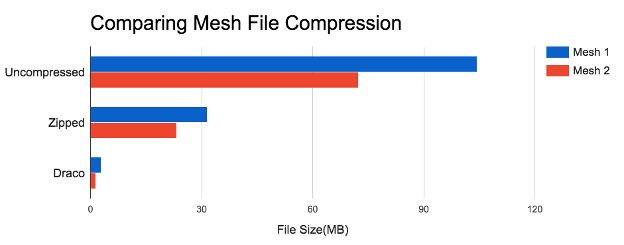First is a list of our Grand Prize winners. These 34 teens completed an astounding 842 total tasks. Each Grand Prize winner will be flown to the Google campus for four days this summer to meet with Google engineers and enjoy the Bay Area.
GRAND PRIZE WINNERS
| Name | Organization | Country |
| Matthew Marting | Apertium | United States |
| Shardul Chiplunkar | Apertium | United States |
| Michal Hanus | BRL-CAD | Czech Republic |
| Sudhanshu Agarwal | BRL-CAD | India |
| Alexandru Bratosin | CCExtractor Development | Romania |
| Evgeny Shulgin | CCExtractor Development | Russian Federation |
| Joshua Pan | Copyleft Games Group | United States |
| Shriank Kanaparti | Copyleft Games Group | India |
| Dhanat Satta-awalo | Drupal | Thailand |
| Utkarsh Dixit | Drupal | India |
| Kaisar Arkhan | FOSSASIA | Indonesia |
| Oana Roşca | FOSSASIA | Romania |
| Raefaldhi Amartya Junior | Haiku | Indonesia |
| Vanisha Kesswani | Haiku | India |
| Ilya Bizyaev | KDE | Russian Federation |
| Sergey Popov | KDE | Russian Federation |
| Anshuman Agarwal | MetaBrainz | India |
| Daniel Hsing | MetaBrainz | Hong Kong |
| Dhruv Shrivastava | Mifos | India |
| Sawan Kumar | Mifos | India |
| Ong Jia Wei, Isaac | Moving Blocks | Singapore |
| Scott Moses Sunarto | Moving Blocks | Indonesia |
| Mira Yang | OpenMRS | United States |
| Nji Collins | OpenMRS | Cameroon |
| Cristian García | Sugar Labs | Uruguay |
| Tymon Radzik | Sugar Labs | Poland |
| August van de Ven | SCoRe | Netherlands |
| Deniz Karakay | SCoRe | Turkey |
| Jacqueline Bronger | Systers | Germany |
| Soham Sen | Systers | India |
| Filip Grzywok | Wikimedia | Poland |
| Justin Du | Wikimedia | United States |
| Sampriti Panda | Zulip | India |
| Tommy Ip | Zulip | United Kingdom |
And below are the Finalists. Each of these 51 students will receive a digital certificate of completion, a GCI t-shirt and hooded sweatshirt.
FINALISTS
| Name | Organization |
| Bror Hultberg | Apertium |
| Kamil Bujel | Apertium |
| Ngadou Sylvestre | Apertium |
| Apratim Ranjan Chakrabarty | BRL-CAD |
| Tianyue Gao | BRL-CAD |
| Trung Nguyen Hoang | BRL-CAD |
| Danila Fedorin | CCExtractor Development |
| Manveer Basra | CCExtractor Development |
| Matej Plavevski | CCExtractor Development |
| Daniel Wee Soong Lim | Copyleft Games Group |
| Jonathan Pan | Copyleft Games Group |
| Oscar Belletti | Copyleft Games Group |
| Ashmith Kifah Sheik Meeran | Drupal |
| Heervesh Lallbahadur | Drupal |
| Neeraj Pandey | Drupal |
| Adarsh Kumar | FOSSASIA |
| Ridhwanul Haque | FOSSASIA |
| Sanchit Mishra | FOSSASIA |
| Dmytro Shynkevych | Haiku |
| Stephanie Fu | Haiku |
| Tudor Nazarie | Haiku |
| Harpreet Singh | KDE |
| Sangeetha S | KDE |
| Spencer Brown | KDE |
| Daniel Theis | MetaBrainz |
| Divya Prakash Mittal | MetaBrainz |
| Tigran Kostandyan | MetaBrainz |
| Illia Andrieiev | Mifos |
| Justin Du | Mifos |
| Tan Gemicioglu | Mifos |
| J Young Kim | Moving Blocks |
| Maxim Borsch | Moving Blocks |
| Quinn Roberts | Moving Blocks |
| Shivani Thaker | OpenMRS |
| Tenzin Zomkyi | OpenMRS |
| Yusuf Karim | OpenMRS |
| Emily Ong Hui Qi | Sugar Labs |
| Euan Ong | Sugar Labs |
| Pablo Salomón Ortega Quintana | Sugar Labs |
| Basil Najjar | SCoRe |
| Jupinder Parmar | SCoRe |
| Thuận Nguyễn | SCoRe |
| Muaaz Kasker | Systers |
| Muhammed Shamil K | Systers |
| Phoebe Fletcher | Systers |
| David Siedtmann | Wikimedia |
| Nikita Volobuev | Wikimedia |
| Yurii Shnitkovskyi | Wikimedia |
| Cynthia Lin | Zulip |
| Rafid Aslam | Zulip |
| Robert Hönig | Zulip |
The Google Open Source Programs Office is proud to run this contest each year. The quality of work from our participating students is incredible, and each year we look forward to meeting our Grand Prize winners in person. It’s exciting to see the next generation of coders emerge! We also owe a huge debt of gratitude to all of the mentors who helped guide each of the participants through their tasks. Without their tireless work over the past 7 weeks, GCI would not be possible.
Stay tuned to the open source blog - we’ll regularly post Google Code-in 2016 stories in the upcoming months including a full breakdown of contest statistics, wrap-up posts from the organizations, student highlights and more.
By Mary Radomile, Open Source Programs Office




